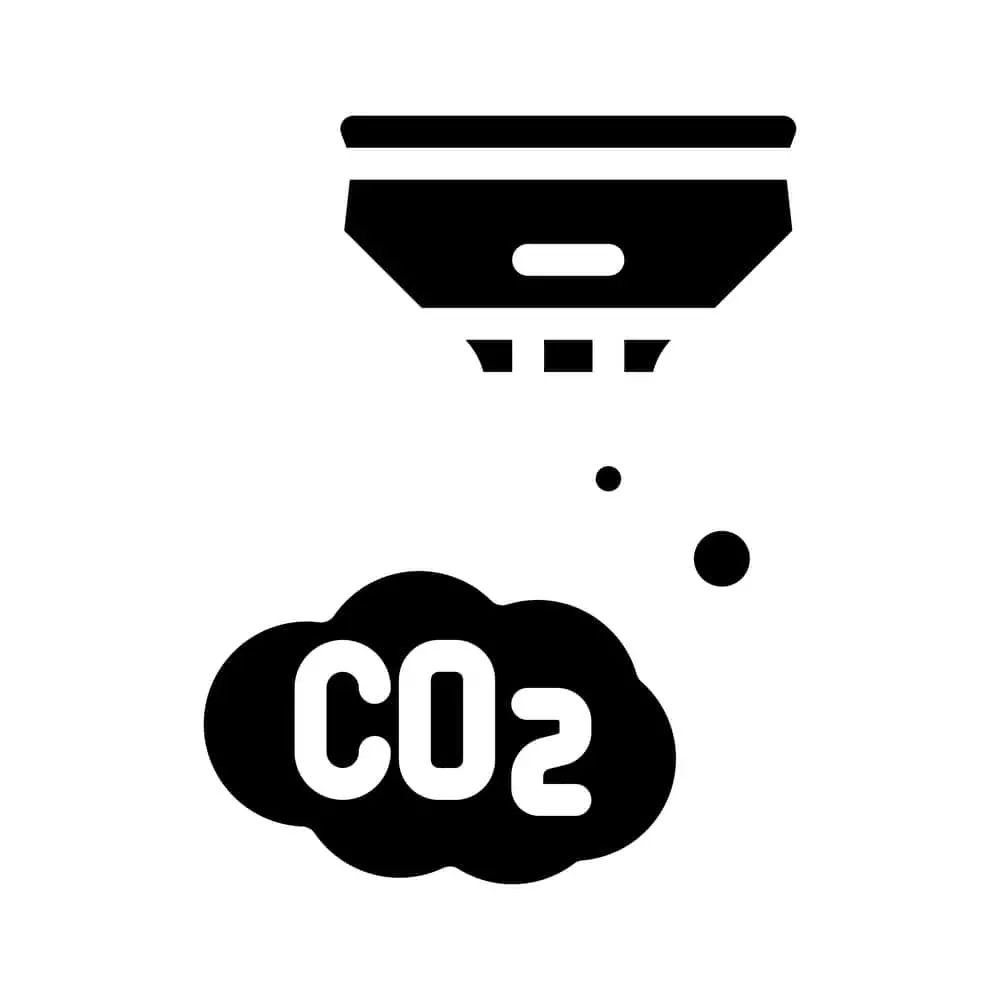Carbon monoxide is a odorless gas that can cause death minutes after inhalation.
Most people only know it as poisonous gas.
About the causes, most have no idea.
Apart from charcoal, many people wonder whether cleaning products contain this gas.
And that begs the big question: Can Cleaning Products Set Off Carbon Monoxide Detectors?
The short answer is yes. Cleaning products do release carbon monoxide when they are left to compost. Whether they can set off carbon monoxide detectors depends on the gas level these products release per unit of time. Carbon monoxide detectors are designed to detect only certain gas levels and raise the alarm. Before it gets to this point, the alarm will not go off.
What Is Carbon Monoxide?
Carbon monoxide is a gas resulting from the incomplete combustion of carbon compounds.
It is a dangerous, odorless gas called a silent killer.
This is so because you can neither see nor smell it.
Once you inhale it, it gets down into the bloodstream and deters your red blood cells from releasing oxygen to tissues.
This causes suffocation and eventual silent death.
Victims of carbon monoxide poison often feel fatigued because it deprives them of energy-yielding oxygen.
What Is Carbon Monoxide Detector?


A carbon monoxide detector monitors for excessive levels of the gas in specific areas of your home.
It does so by blaring a loud alarm to alert you of the developing hazard.
Smoke detectors work this way but raise the alarm in the presence of smoke in the room that might indicate a fire.
Everyone should evacuate to a safe area whenever a carbon monoxide detector raises the alarm.
How Does a Carbon Monoxide Detector Work?


A carbon monoxide detector has an electrochemical sensor that continually monitors the presence and quantity of carbon monoxide in the rooms.
It can only trigger the alarm if the levels of carbon monoxide in the amount of:
- 150 PPM for about 15-50 minutes
- 70 pars of PPM between 65-230 minutes
- 400 PPM between 3-15 minutes
This is the usual gauge that a typical carbon monoxide detector uses to relay signals of intensifying carbon monoxide levels in your home.
Why Would Cleaning Products Set Off A Carbon Monoxide Detector?
Cleaning products compost with time and release gases, including toxic carbon monoxide.
The extent of the poison depends on the time left in the room.
All carbon monoxide detectors detect only certain levels of carbon monoxide.
What Are The Most Common Sources of Residential Carbon Monoxide?


Fossil fuels release a large amount of carbon monoxide if not fed with enough oxygen for complete combustion.
As you would expect, the commonest causes of carbon monoxide in homes are all devices and tools used for cooking.
Some common sources include:
- Gas line leaks
- Generators
- Oil and gas furnaces
- Fireplaces
- Motor vehicles in the garage
- Stoves and gas ranges
- Gas dryers
- Gas water heaters
- Cleaning products
Carbon Monoxide Detector Placement
An ideal placement point for a carbon monoxide detector would be an area that is most likely to be the source of the gas.
A carbon monoxide monitors the gas levels in these hot spot areas.
This will ensure that you are always in the know of the gas levels and can run away for safety in case of an upsurge.
The best areas to put a carbon monoxide detector would be:
- Sleeping areas like the bedroom. If there is more than one bedroom, make sure each bedroom has its carbon monoxide detector. If you cannot manage to install it inside the bedroom, make sure that it is near it so that you can hear the alarm just in case it goes off.
- You can also plug it into the standard wall outlet
- If you live in a multilevel home, installing a carbon monoxide detector on every level is recommended. This includes the basement
Where Not to Place the Carbon Monoxide Detector
- Outside the doorways or next to windows
- Above or within 15 feet from a potential source
- Dead air spaces. These include the inside walls where there is no potential source.
What Can Cause Carbon Monoxide Levels to Rise in The Homes?
Carbon monoxide exists where there is combustion.
There is no doubt your home has an amount of it.
It is the levels of this gas that’s important.
Otherwise, gas is inevitable because we do a lot of cooking in the home and use carbon fuels that release carbon monoxide.
And even if you do not cook, your automobiles burn fossil fuels to release energy and some amount of carbon monoxide.
It is, therefore, critical to understand the causes of an increase in the levels of carbon monoxide in homes so you can help combat this deadly gas.
Common causes of upsurge in carbon monoxide levels include:
- Blocked dryer vent
- Furnace malfunction
- Vehicle left running in a closed garage
- Gas line leak
- Charcoal grill or fireplace that is not properly ventilated
- Poorly ventilated rooms.
How Can You Refresh Air in The Home?
Carbon monoxide and other toxic gases dissipate.
Fresh air in the home makes living conditions very conducive.
A natural and widely known method of ensuring this freshness of the air in homes is opening windows and doors during the day to allow air circulation.
Here are other efficient methods:
- Turn your home’s air conditioning to fan mode.
- Use air purifiers.
- Clean your HVAC units regularly. Old and worn-out models should be replaced immediately
- Buy new air filters for your HVAC units
- Invest in dehumidifier
- Invest in appropriate ventilators for your HVAC units.
Sources
https://blog.encorefireprotection.com/blog/carbon-monoxide-detector-beeping


